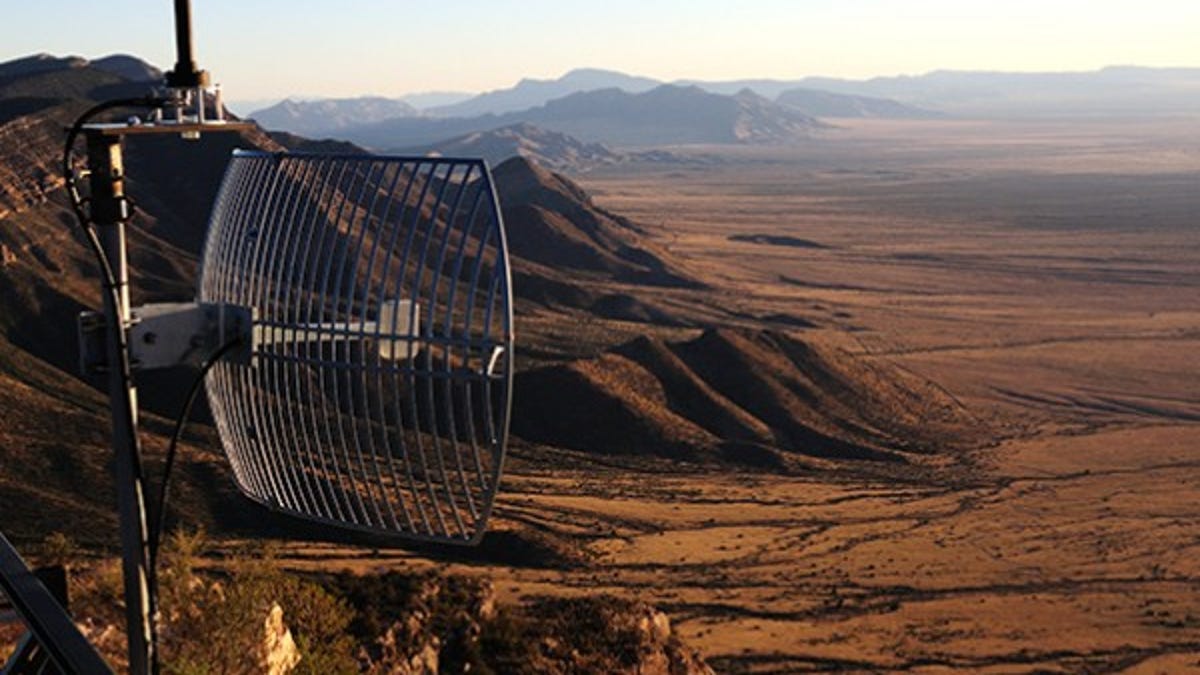Locata wants to fill holes in GPS location, navigation
Its ground-based equivalent of satellite navigation technology is for governments and businesses today, but Locata hopes to bring it to smartphones in two years or so.

It's a common affliction: you're using your smartphone to navigate in a city with a bunch of big buildings and your phone misplaces your location.
Often the problem often is that the GPS location system just doesn't work well where the satellite radio signals can be blocked or reflected. A company called Locata says it's got an answer.
Locata does what the GPS system does, but it replaces satellites in orbit with radio transmitters on the ground. The result is location services with high precision, better reliability, and indoor coverage, said Paul Benshoof, global business development manager for the Australian company.
"GPS is like Swiss cheese. It's really good, but it has holes," Benshoof said. "It doesn't work indoors, where there's interference. It doesn't work in urban canyons, where there's obscuration of satellites by buildings. It doesn't work in dense foliage. We can plug those holes."
In a test in Sydney, Locata devices could pinpoint their location with precision of less than 2 inches. That's a lot better than GPS' 10 to 25 feet, though various augmentation technologies can improve accuracy to inches.
Location-based services are important on the Net today. Along with navigation services, smartphone location is the basis for explore nearby businesses, find friends, geotag photos, and play games such as Google's Ingress.
But Locata, which has been working on location technology since the early days of consumer GPS services 17 years ago, isn't yet aiming for consumer applications. It's used for precisely locating drilling equipment at the Newmont Boddington Gold Mine in Australia, and today, Locata announced it's won a contract through which the U.S. Air Force will use Locata to keep track of aircraft at its White Sands Missile Range in New Mexico during operations that jam GPS.
And Locata's technology is hardly ready to be squeezed into a mobile phone. A receiver today measures about 5 inches by 5 inches by 1 inch and costs about $10,000. But it'll be smaller and cheaper soon.
Today, Locata uses large, expensive, but adaptable chips called field-programmable gate arrays (FPGAs) to run its algorithms. But it's planning on partnerships that to build custom chips.
"We're working with a company to shrink that," Benshoof said. "We envision really within a couple years."
Another constraint: the transmitters aren't cheap to set up, with a price tag of about $200,000. That means buyers today are entities like governments and the military. The technology today is useful for keeping airports humming, for keeping mobile phone towers doing their thing, for coordinating the electrical power grid in sync, and for tracking firefighters, police, and other emergency personnel. And countries that might not want to rely on the United States' geopositioning system also can use it, Benshoof added.
"To launch a global navigation satellite system, you basically need to be a superpower," he said. "What's that say for the 200-some non-superpowers?"
As with GPS, though, Benshoof expects others will adopt the technology once it's available.
"I think that when governments start adopting it as backup to their critical infrastructure, others will be able to catch on," he said.
Locata's transmitters broadcast signals over the 2.4GHz radio channel, an openly available frequency used by Wi-Fi, baby monitors, and other technology. A surveyor must precisely locate each transmitter, but once that's done, the transmitter broadcasts its location information so a device can use it for locating itself.
Locata's technology is designed to supplement GPS, not replace it. If a device already knows its location but GPS stops working, Locata can take over in an instant. Otherwise -- when popping out of a subway station, for example -- it can take 30 seconds to get a fix on the towers and calculate a location based on differences between the time-code data embedded in each transmitter's signal.

